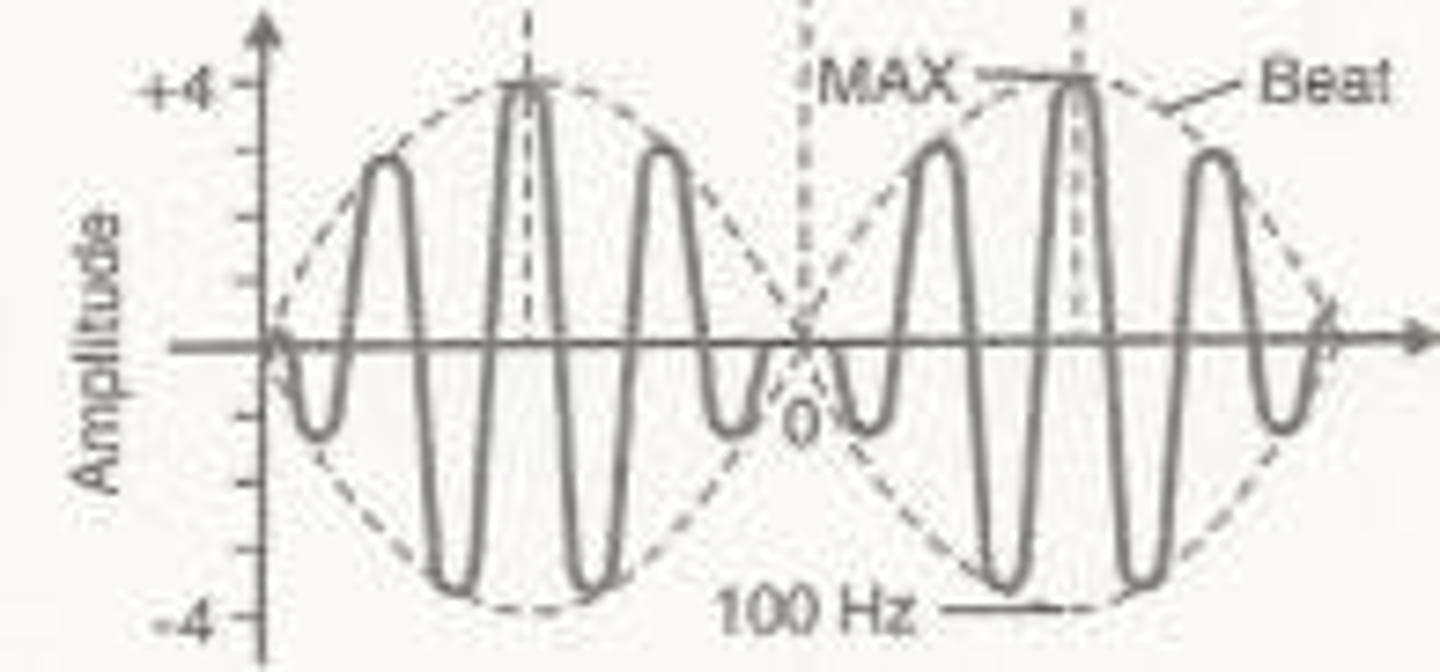TENS/IFC/NMES/Laser/Traction Parameters
1/124
There's no tags or description
Looks like no tags are added yet.
Name | Mastery | Learn | Test | Matching | Spaced |
|---|
No study sessions yet.
125 Terms
Conventional TENS Amplitude
Comfort; Submotor
Conventional TENS Pulse Duration
Short: 50-125 µs
Conventional TENS Pulse Rate
High: 50-110 pps
Modulated Conventional TENS Pulse Rate
High: 85pps
Conventional TENS MOA
Gate theory
Conventional TENS Electrode Placement
a) Local area of pain
b) Related spinal segment
Conventional TENS Application Technique
15-60 minute applications
Reassess hourly
Conventional TENS Duration of Relief
Fast/immediate: 5 to 10 minutes
Burst TENS Amplitude
Medium to High- (rhythmic muscular contraction)
Burst TENS Pulse Duration
Long: 200-500 µs
Burst TENS Pulse Rate
High: 70-100 pps bursts delivered at rates of 1-5 bps
Burst TENS MOA
Endogenous Opiate
Burst TENS Electrode Placement
Segmentally related myotomes
Burst TENS Application Technique
15-60 minutes
Burst TENS Onset of Relief
Slow: 20-40 minutes
Low Frequency TENS Amplitude
Medium to High- (muscular contraction)
Low Frequency TENS Pulse Duration
Long: 200-500 µs
Low Frequency TENS Pulse Rate
Low: 1-5 pps
Low Frequency TENS MOA
Endogenous Opiate
Low Frequency TENS Electrode Placement
Segmentally related myotomes
Low Frequency TENS Application Technique
15-60 minutes
Low Frequency TENS Onset of Relief
Slow: 20-40 minutes
Brief-Intense TENS Amplitude
High (below muscular contraction)
Brief-Intense TENS Pulse Duration
Long: 250-400 µs
Brief-Intense TENS Pulse Rate
High: 110-200 pps
Brief-Intense TENS Mechanism of Action
Endogenous Opiate; Gate
Brief-Intense TENS Electrode Placement
Superficial peripheral nerves
Brief-Intense TENS Application Technique
Maximum 15 minutes
Brief-Intense TENS Onset of Relief
Immediate
Sensory Interferential Current (IFC) Indication
Pain

Sensory IFC Pulse Rate
80-250 BEATS per second (bps)
Sensory IFC MOA
Gate Theory
Sensory IFC Electrode Placement
Quadripolar
Sensory IFC Application Technique
15 to 60 minutes
Sensory IFC Program Used
P3
Sensory IFC Onset of Relief
Medium: 10-20 minutes
Sensory to Motor IFC Indication
Muscle spasm
Sensory to Motor IFC Pulse Rate
1-10 bps
Sensory to Motor IFC MOA
Gate OR Endogenous Opiate
Sensory to Motor IFC Electrode Placement
Quadripolar
Sensory to Motor IFC Program Used
P1
Sensory to Motor IFC Application Technique
15 to 60 minutes
Sensory to Motor IFC Onset of Relief
Medium: 10-20 minutes
Sensory and/or Motor IFC Indication
Pain, Muscle Spasm/Guarding
Sensory and/or Motor IFC Pulse Rate
1-150 bps
Sensory and/or Motor IFC MOA
Gate or Endogenous Opiate
Sensory and/or Motor IFC Program Used
P2
Sensory and/or Motor IFC Application Technique
15-60 min.
Sensory and/or Motor IFC Electrode Placement
Quadripolar
NMES+ for Muscle Strengthening Amplitude
strong, visible contraction
NMES+ for Muscle Strengthening Frequency
35-80 pps
NMES+ for Muscle Strengthening Duty Cycle
1:5
NMES+ for Muscle Strengthening Tx Time
produce 10-20 reps
NMES+ for Muscle Strengthening Ramp
at least 2 sec.
NMES+ for Muscle Strengthening Pulse Duration
- 150-200 microseconds (small muscle)
- 200-350 microseconds (large muscle)
Russian Stimulation Amplitude
Strong, visible contraction
Russian Stimulation Frequency
50 pps
Russian Stimulation Duty Cycle
- 6-10 seconds ON
- 50-120 seconds OFF
Russian Stimulation Tx Time
10-20 reps
Russian Stimulation Ramp
at LEAST 2 seconds
Russian Stimulation Pulse Duration
250 microseconds
NMES for Endurance Amplitude
minimal tetanizing
NMES for Endurance Frequency
40 pps or less (minimize fatigue)
NMES for Endurance Duty Cycle
typical = 1:6
NMES for Endurance Tx Time
- initial = Pt tolerance
- progress to longer ON and shorter OFF times
NMES for Endurance Ramp
based on activity (1:5)
NMES for Endurance Pulse Duration
- 150-200 microseconds (small muscle)
- 200-350 microseconds (large muscle)
NMES for Spasm Reduction Amplitude
visible contraction
NMES for Spasm Reduction Frequency
35-50 pps
NMES for Spasm Reduction Duty Cycle
1:1 (2-5 s. ON; 2-5s. OFF)
NMES for Spasm Reduction Tx Time
10-30 min.
NMES for Spasm Reduction Ramp
at least 2 sec.
NMES for Spasm Reduction Pulse Duration
- 150-200 microsec. (small muscle)
- 200-350 microsec. (large muscle)
Functional Electrical Stimulation (FES) Amplitude
sufficient for function
Functional Electrical Stimulation (FES) Frequency
40 pps or less (same as endurance)
Functional Electrical Stimulation (FES) Duty Cycle
- depends on activity
- remote switch may override
Functional Electrical Stimulation (FES) Tx Time
depends on activity
Functional Electrical Stimulation (FES) Ramp
at least 2 s.
Functional Electrical Stimulation (FES) Pulse Duration
- 150 - 200 (small muscle)
- 200 - 350 (large muscle)
NMES for Hypertonicity/Spasticity (Reciprocal Inhibition) Amplitude
visible contraction of ANTAGONIST
NMES for Hypertonicity/Spasticity (Reciprocal Inhibition) Frequency
minimal tetany (<40 pps)
NMES for Hypertonicity/Spasticity (Reciprocal Inhibition) Duty Cycle
1:6 - avoid fatigue
NMES for Hypertonicity/Spasticity (Reciprocal Inhibition) Tx Time
literature varies
NMES for Hypertonicity/Spasticity (Reciprocal Inhibition) Ramp
At least 2 seconds
NMES for Hypertonicity/Spasticity (Reciprocal Inhibition) Pulse Duration
- 150-200 (small)
- 200-350 (large)
NMES for Hypertonicity/Spasticity (Hypertonic Stimulation) Amplitude
visible contraction
NMES for Hypertonicity/Spasticity (Hypertonic Stimulation) Frequency
35-50 pps
NMES for Hypertonicity/Spasticity (Hypertonic Stimulation) Duty Cycle
to avoid fatigue, 1:6
NMES for Hypertonicity/Spasticity (Hypertonic Stimulation) Tx Time
10-30 min.
NMES for Hypertonicity/Spasticity (Hypertonic Stimulation) Pulse Duration
150 - 200 (small)
200-350 (large)
Low Level Laser Therapy (LLLT) Dose for Soft Tissue Healing
5-16 J/cm^2
Low Level Laser Therapy (LLLT) Dose for Arthritis
2-8 J/cm^2
Low Level Laser Therapy (LLLT) Dose for Neuropathy
10-12 J/cm^2
Low Level Laser Therapy (LLLT) Dose for Trigger Points
3-20 J/cm^2
Low Level Laser Therapy (LLLT) Dose for Acute Soft Tissue Inflammation
2-8 J/cm^2
Low Level Laser Therapy (LLLT) Dose for Chronic Soft Tissue Inflammation
10-20 J/cm^2
Low Level Laser Therapy (LLLT) Dose for Muscle Spasm
2-6 J/cm^2
Low Level Laser Therapy (LLLT) Dose for Frozen Shoulder
3-6 J/cm^2
Low Level Laser Therapy (LLLT) Dose for Sciatica
4-8 J/cm^2
Low Level Laser Therapy (LLLT) Dose for Tendinitis
2-10J/cm^2